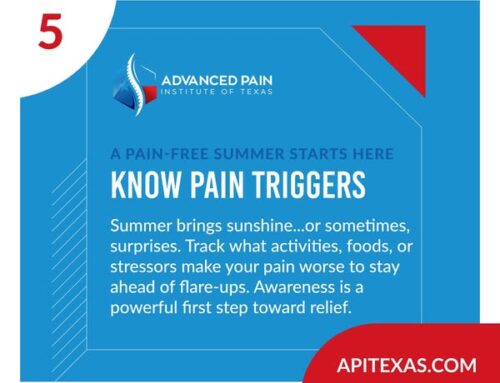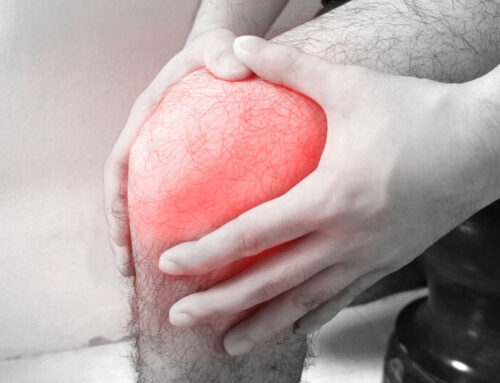
Tips to Help You Manage Chronic Pain During Winter
Living with chronic pain can be challenging at any time of the year, but the cold months often amplify the struggle. As temperatures drop, joint stiffness, muscle aches, and inflammation can worsen, making even simple activities more difficult. However, with the right strategies, you can manage chronic pain effectively and improve your quality of life during the winter season.
In this guide, we’ll explore actionable tips to help you manage chronic pain during cold months, covering everything from home remedies to professional treatments and mental health support.
Understanding Chronic Pain in Cold Weather
How Cold Temperatures Impact Joint and Muscle Pain
Cold weather often reduces blood flow to the extremities, causing stiffness and discomfort in the joints and muscles. For individuals with conditions like arthritis or fibromyalgia, lower temperatures can lead to increased sensitivity and pain.
The Science Behind Weather-Related Pain Sensitivity
Barometric pressure—the force exerted by the air—tends to drop during winter, which may cause tissues around joints to expand and create pressure on nerves. This physiological response explains why many people feel “achier” when the weather changes.
Why Chronic Pain Worsens During Winter Months
Factors such as inactivity, weight gain, and reduced vitamin D exposure can exacerbate chronic pain during cold months. Additionally, seasonal changes often trigger inflammation, worsening the discomfort.
Lifestyle Adjustments to Manage Pain in Cold Months
Importance of Staying Physically Active in Winter
Exercise keeps your joints flexible and muscles strong, reducing pain. Even light activities like walking indoors or stretching can make a significant difference.
Diet and Nutrition to Combat Inflammation
Include foods rich in omega-3 fatty acids, like salmon, flaxseeds, and walnuts, to fight inflammation. Antioxidant-rich vegetables, fruits, and turmeric can further reduce pain.
Dressing in Layers to Protect Against Cold-Induced Pain
Layered clothing traps heat and keeps muscles warm. Use thermal wear, gloves, and scarves to protect sensitive areas and joints from exposure to cold.
Effective Home Remedies for Winter Pain Relief
Using Heat Therapy to Relax Muscles
Applying heat through heating pads, warm compresses, or heated blankets can improve blood circulation and relax stiff muscles.
Benefits of Epsom Salt Baths for Chronic Pain
Soaking in a warm Epsom salt bath helps reduce muscle soreness and inflammation due to the magnesium sulfate content.
The Role of Proper Sleep and Relaxation
Sleep is critical for pain recovery. Use weighted blankets and practice relaxation techniques to ensure deep, uninterrupted rest.
Professional Treatments for Chronic Pain
Physical Therapy for Winter-Specific Pain Issues
A physical therapist can recommend customized exercises and treatments, such as ultrasound therapy, to alleviate pain during winter.
Massage Therapy for Improved Blood Circulation
Massage relaxes tense muscles and improves blood flow, helping combat stiffness caused by cold weather.
When to Consult a Pain Management Specialist
If pain becomes unmanageable despite lifestyle changes, consult a specialist who can explore treatments like nerve blocks or other therapies.
Exercises to Alleviate Chronic Pain During Winter
Low-Impact Exercises for Joint Mobility
Focus on activities like swimming (in a heated pool), gentle walking, or cycling on a stationary bike to maintain mobility.
Indoor Stretches to Warm Up Muscles
Incorporate simple stretches such as forward bends, spinal twists, and leg stretches into your daily routine.
Yoga and Tai Chi for Pain Management
Both yoga and Tai Chi emphasize controlled movements and breathing, improving flexibility and reducing chronic pain symptoms.
Mental Health Strategies for Coping with Pain
Practicing Mindfulness and Meditation
Mindfulness helps you focus on the present moment and reduces stress, which can amplify pain. Use guided meditation apps for support.
Managing Seasonal Depression and Anxiety
Cold months can bring on feelings of isolation and sadness. Speak with a therapist, join a support group, or use light therapy to combat seasonal affective disorder (SAD).
How to Build a Support System During Challenging Months
Surround yourself with supportive family and friends who understand your condition. Sharing experiences with others can reduce feelings of loneliness.
Creating a Pain-Relief-Friendly Home Environment
Adjusting Room Temperature and Humidity
Maintain a warm and consistent indoor temperature. Use humidifiers to combat dry air, which can worsen pain.
Choosing Ergonomic Furniture and Accessories
Invest in ergonomic chairs, mattresses, and cushions to reduce pressure on joints and promote good posture.
Using Essential Oils for Relaxation and Pain Relief
Lavender, peppermint, and eucalyptus oils can be diffused or applied (diluted) to reduce pain and promote relaxation.
Dietary Supplements and Medications for Pain Relief
Vitamins and Supplements to Combat Pain in Winter
Vitamin D, magnesium, and omega-3 supplements can address deficiencies that worsen pain during colder months.
Over-the-Counter Medications to Relieve Pain
Non-steroidal anti-inflammatory drugs (NSAIDs) like ibuprofen can provide temporary relief for muscle and joint pain.
The Importance of Consulting Before Self-Medication
Always consult a doctor before starting new medications to avoid adverse effects or drug interactions.
Staying Hydrated to Reduce Winter Stiffness
How Dehydration Affects Joint and Muscle Health
Lack of hydration can make cartilage less flexible, leading to joint discomfort and pain.
Tips to Increase Water Intake During Cold Weather
Warm herbal teas, broths, and infused water can make hydration easier in winter.
Tracking Your Pain Levels During Cold Months
Keeping a Pain Diary for Better Management
Document your daily pain levels, triggers, and relief strategies to identify patterns.
Identifying Triggers and Patterns in Cold Weather
Common triggers include sudden temperature drops, poor posture, and prolonged inactivity.
Working with Healthcare Providers to Monitor Progress
Regular check-ups help assess progress and adjust pain management plans accordingly.
Managing Chronic Pain with Technology
Wearable Devices to Monitor Pain and Physical Activity
Wearable devices can track steps, temperature, and physical activity to help manage your condition.
Apps and Tools for Pain Management Tracking
Use apps like MyPainDiary or Calm to monitor pain levels and incorporate mindfulness.
Online Consultations and Telehealth Options for Pain Relief
Telehealth makes it easier to consult professionals without leaving the comfort of your home.
Precautionary Measures for Outdoor Activities
Preparing Your Body Before Stepping Out
Warm up indoors with light stretching before venturing into cold temperatures.
Choosing the Right Winter Footwear to Avoid Falls
Non-slip shoes and insulated boots provide stability and warmth.
Safety Tips for Exercising in Cold Weather
Avoid overexertion and dress appropriately to prevent injuries and muscle strains.
Common Myths About Chronic Pain During Winter
Debunking Misconceptions About Weather and Pain
Not everyone experiences the same level of pain in winter; individual responses vary.
Separating Fact from Fiction in Pain Management
Lifestyle and treatment adjustments often work better than common myths, like “just ignore the pain.”
When to Seek Emergency Medical Help for Pain
Recognizing Severe Symptoms That Require Immediate Attention
Sudden swelling, extreme stiffness, or severe unrelieved pain are signs to seek emergency care.
Role of Emergency Pain Clinics During Winter
Emergency clinics can provide immediate relief through specialized treatments.
Finding Reliable Medical Support During Cold Seasons
Establish contact with a trusted pain management clinic for ongoing care.
FAQs
- Why does chronic pain worsen during winter?
Cold temperatures reduce blood circulation, causing muscle stiffness and joint discomfort. - What exercises help relieve chronic pain in winter?
Low-impact exercises like yoga, stretching, and swimming are ideal for managing pain. - Can diet influence chronic pain during cold months?
Yes, anti-inflammatory foods like omega-3-rich fish and leafy greens can help reduce pain. - How does hydration affect joint health?
Staying hydrated keeps joints lubricated and reduces stiffness. - What role does heat therapy play in pain relief?
Heat improves blood flow and relaxes stiff muscles, providing immediate comfort. - When should I seek professional help for chronic pain?
If your pain becomes unmanageable despite home remedies and self-care, consult a specialist.
Share this article
Follow us
A quick overview of the topics covered in this article.











